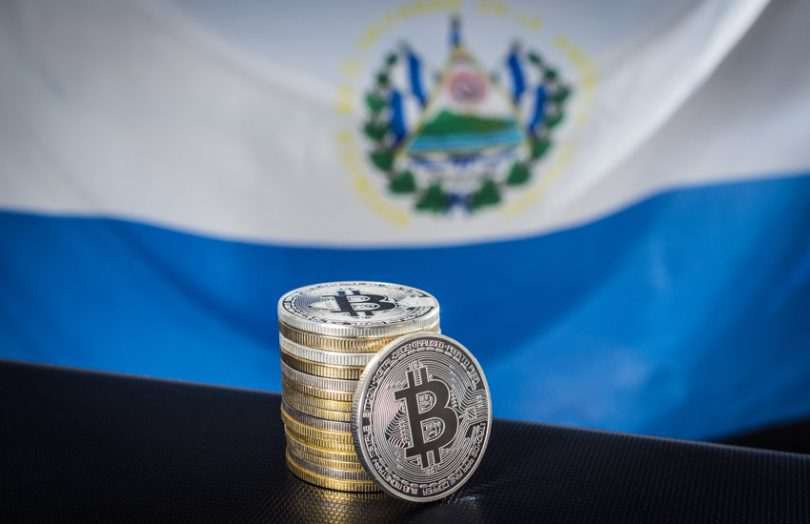El Salvador’s announcement of plans to issue a ten year $1 billion Bitcoin Bond has attracted skepticism from mainstream media. That’s in part because it carries a 6.5% coupon, whereas other ten year El Salvador bonds currently yield 13%. But we think a few key points are being missed, like the big picture objective of a Bitcoin supply squeeze.
We’ll briefly explore the bond, but the focus is on three other aspects. This is a brilliant marketing campaign for a new asset class of tokenized bonds. It also highlights how some first world regulated entities are starting to interact with some controversial ones. And one of the motives behind the bond issue is to reduce the available supply of Bitcoin. Some might view that as an attempt at market manipulation.
Half of the bond’s proceeds are meant to go towards building a Bitcoin City and Bitcoin mining infrastructure. The other half will be invested in Bitcoin, which will be locked for five years. Part of the gain on Bitcoin will go to investors as the Bitcoin is sold on a quarterly basis from the five year point onwards. These gains were the argument given for why a 6.5% coupon is not comparable with existing bonds.
Brilliant promotion
Bitcoin software and mining firm Blockstream is credited with coming up with the idea. The bonds will be issued using its Liquid Network, a Bitcoin sidechain that supports tokenized securities. Unlike the Bitcoin main chain, Liquid enables confidential transactions, identity verification and two-minute settlement. Blockstream and its executives have used Liquid for issuing securities, including with German regulator BAFIN’s approval.
If you stand back a minute, pretty much every major financial news outlet has covered this Bitcoin Bond. It’s far higher profile than when the Commonwealth Bank issued a blockchain bond for the World Bank back in 2018. Last week Swiss stock exchange SIX launched its SIX Digital Exchange (SDX) that included a tokenized bond for SIX. Most mainstream outlets didn’t mention it. However, the European Investment Bank’s Ethereum bond faired a bit better but not on this scale.
The Bitcoin Bond is a potential win-win for all participant parties. The Liquid Network gets massive exposure. Bitfinex, the controversial crypto company associated with the Tether stablecoin and banned in New York, gets another regulatory license. It is already a regulated Kazhakstan institution. And Bitfinex gets to write the rules for cryptocurrencies and digital securities. That’s also good for Blockstream because Bifinex’s parent iFinex is one of its major investors.
El Salvador, with a GDP of just $24.6 billion, gets a massive influx of money at a time when it’s struggling with the IMF. And assuming most of the investor funds come from Bitcoin maximalists, the investors get to support an attempt to contract the Bitcoin supply. So even if, god forbid, they end up not getting repaid, they might be hoping for a return on a future price squeeze.
The Bitcoin squeeze
Samson Mow, Blockstream’s Chief Strategy Officer, spoke on the stage at the launch event. He stated that this would be the first Bitcoin Bond issue for El Salvador, with plans for more.
Talking about the $500 million that’s invested in Bitcoin, he said, “There’s a five-year lockup on the bond, so that’s half a billion dollars taken off the market for five years. If you do nine more bonds, that’s ten bonds. That’s five billion in Bitcoin taken off the market for ten years. And if you get ten more countries to do these bonds, that’s half of Bitcoin’s market cap right there.” Mow was on stage, so perhaps a little nervous because ten countries would represent $50 billion or 5% of Bitcoin’s market capitalization. Nonetheless, the intention is clear. “This is the beginning of a nation state FOMO,” he said.
He went on to explain that he believes Bitcoin will be worth a million in five years. We calculated that if half of the price increase is shared with investors as a dividend, it would leave the country with $4 billion in gains which would easily pay back investors. But that’s all based on a bet that Bitcoin will be worth a million in five years and that proceeds don’t get used for other purposes.
If there’s a true belief in Bitcoin as a currency, then there’s an argument that the bond should be denominated in Bitcoin, not dollars. Of course, if there’s an expectation of price appreciation exaggerated by a planned price squeeze, that might not work out for El Salvador when it comes to repayment. Unless Bitcoin really became mainstream in the country, not just legal tender. And if it wasn’t so reliant on incoming dollar remittances.
Let’s circle back to that Liquid Network.
Regulated entities rubbing shoulders with banned ones
It would be a mistake to write off Blockstream and its Liquid Network as purely niche. Both companies rub shoulders with mainstream regulated entities. For example, Daiwa has issued securities on the Liquid Network. Swiss exchange SIX is a federation member of Liquid, as is Komainu, the crypto custody joint venture part owned by Nomura. Blockstream provides Bitcoin mining services to Fidelity and Galaxy Digital. And Goldman Sachs clients invest in Galaxy Digital funds. Baillie Gifford, a top-ten UK asset manager, led Blockstream’s $210 million Series B funding alongside iFinex, precisely because of its interest in tokenized securities.
It’s the association with Bitfinex that raises eyebrows. iFinex, the parent of crypto exchange Bitfinex has a deal with El Salvador. It will help the country “to create and implement appropriately balanced cryptocurrency laws, regulations, rules, and guidelines, particularly as they relate to digitized financial instruments in order to promote the growth of the cryptocurrency sector in El Salvador,” it said in a statement.
Backing up a bit. This is the same organization that was banned by the New York Attorney General because of loans from the Tether stablecoin backing assets used to cover Bifinex losses amongst other issues. There will be an El Salvador law that has not yet been created, and hence it’s not possible for Bitfinex to have been reviewed as an appropriate and compliant institution. But a decision has already been made that Bitfinex will get a license. After all, it will help write the rules.
“You know with Bitfinex they have a lot of whales, so I don’t see a problem filling a billion dollar bond,” said Mow on stage at the launch event. In a Bloomberg interview, Mow was wearing a T-shirt emblazoned with the Tether stablecoin logo. Why not just invest Tether stablecoin reserves directly in the Bitcoin Bond? Would you be willing to bet against that happening, if not for this bond, then a future one?
So, on the one hand, the Bitcoin Bond seems like a brilliant marketing move for the Liquid Network and digital bonds in general.
But its association with a government leaning heavily towards being authoritarian, Bitfinex, not known for its past transparency, combined with the motivation of a Bitcoin squeeze, begs the question. Blockchain has the potential to offer a more hopeful future. Is the picture of the future painted by this particular event better than what we have now?






